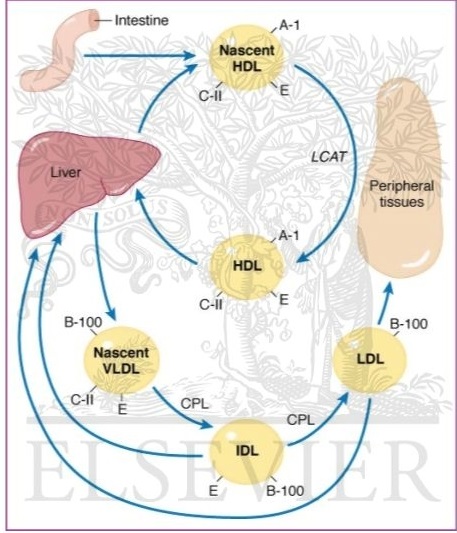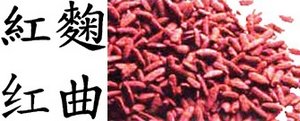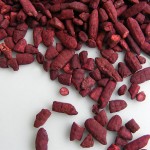Acupuncture and Traditional Chinese Medicine for Healthy Cholesterol
High cholesterol (hyperlipidemia) in Chinese Medicine perspective is considered a “phlegm” condition and is related to the malfunction of liver in regulating the transformation and transportation of cholesterol.
Cholesterol is an essential structural component of all cell membranes. In addition to providing proper membrane permeability and fluidity, cholesterol aids in intracellular transport, signaling and nerve conduction. Cholesterol is the precursor for the biosynthesis of steroid hormones, bile acids and vitamin D. These steroid hormones include cortisol, aldosterone, progesterone, estrogen and testosterone. The body makes about 75% of blood cholesterol, while the other 25% comes from food from animal sources. Cholesterol is converted in bile in the liver and stored in the gallbladder.
Up to about 1 gram of cholesterol enters the colon a day from food, bile and intestinal cells. It is then converted into a nonabsorbable sterol that is excreted in the feces. The liver functions in regulating cholesterol levels of by synthesizing cholesterol and also removing it from the body. An individual’s cholesterol level may differ for a number of reasons including heredity, level of physical activity, weight, diet, hormonal changes and age. Eating a diet rich in fruits and vegetables, lean protein and healthy fats while engaging in regular physical activity are the first steps one should take to reduce cholesterol levels.
Cholesterol is often talked about as ‘good’ cholesterol and ‘bad’ cholesterol. High density lipoproteins, HDLs, are the ‘good’ cholesterol. While low density lipoproteins, LDLs, are the ‘bad’ cholesterol. HDLs are composed mainly of proteins, with only small amounts of cholesterol. These lipoproteins help remove cholesterol from the artery walls and transport it to the Liver for elimination. This is how high levels of HDLs help protect the body from coronary heart disease. LDSs are the complete opposite, they are composed mainly of cholesterol and a small amount of proteins. They mainly deposit cholesterol within the arteries, which is why LDLs are associated with coronary heart disease.
High cholesterol is a medical condition where the amount of cholesterol in the bloodstream exceeds a normal level. Excess cholesterol in the bloodstream is deposited on the lining of arteries, which can result in a number of coronary conditions. While high cholesterol is most commonly treated by western medical professionals with the use of statin drugs, these drugs can cause a number of unwanted side effects with long term use. Traditional Chinese Medicine (TCM) offers a safe, natural alternative to manage cholesterol. TCM treatment for high cholesterol focuses primarily on balancing the body using acupuncture, combined with healthy lifestyle recommendations and treatment with Chinese herbs that directly affect the mechanisms of cholesterol production and absorption. Herbs commonly used for cholesterol reduction include red yeast rice (Monascus purpureus), Jue Ming Zi (Semen cassia), Shan Zha (Crataegi Fructus), Zi Xie (Rhizoma Alismatis) and Dan Shen (Salvia miltiorrhizae), to name a few. The herbs not discussed in this article will be address in later posts.
Statin drugs, which are among the most widely prescribed group of drugs, can lower cholesterol levels and reduce the risk of cardiovascular disease. They work by inhibiting HMG-CoA reducatse, which is involved in the production of cholesterol in the liver. Japanese biochemist, Akira Endo, and his team began researching for a cholesterol-lowering drug in 1971. His team researched fungi like molds and mushrooms that would produce antibiotics that would be able to inhibit HMG-CoA reductase. They found mevastatin, which was produced by the fungus Penicillium citrinum. Around the same time pharmaceutical companies began looking for another statin and Merck became in a confidentiality agreement with Endo’s company and obtained the samples and data of his work. Merck was then able to isolate a statin very similar in chemical structure, called mevinolin, from the fungus Aspergillus terreus.
As more and more patients have been using statin drugs for longer periods of time, several potentially serious side effects have been observed. Taking statin drugs to artificially lower cholesterol can limit the availability of important building blocks needed for normal bodily function. These side effects include muscle weakness, nerve and muscle pain, liver damage and memory loss. The U.S. Food and Drug Administration has expanded the warning for statin drugs to include the statement that statin use may lead to cognitive impairment. However, possibly the most serious long term side effect of statin drug use is the potential for liver damage. Statin drugs not only affect cholesterol levels, but may cause an elevation of liver enzymes. This elevation in liver enzymes may result in liver damage and hepatitis.
Statins work to eliminate cholesterol by stopping its production. However, as noted before, cholesterol is an important component for all cells and impeding its production can lead to serious side effects. This is the reason why statins come with a long list of side effects, such as liver and kidney failure. Traditional Chinese Medicine can be used to help lower cholesterol, but not stop the production. By not impeding its production, Traditional Chinese Medicine can be used to lower cholesterol and avoid the side effects that statin drugs cause.
In Traditional Chinese Medicine red yeast rice has been used for centuries as a very powerful cholesterol-lowering food. Red yeast rice is a substance extracted from rice that has been fermented with a type of yeast called Monascus purpureus. This fermentation process changes the color of the rice from white to red, giving it its name “red yeast rice.” Red yeast rice contains several ingredients that work to control cholesterol. One of these key ingredients is Monacolin-K which is chemically identical to lovastatin. Lovastatin is the source of all statin drugs today. However, it has been shown that the natural product contains other compounds that aid in the reduction of cholesterol and is more powerful than just using the isolated lovastatin. Red yeast rice became marketed in the US as a dietary supplement, Cholestin, only to be banned by the FDA in 1998. They said that since it contained lovastatin it was an unapproved drug. This was overruled in 1999 by a federal judge, saying it could be sold as a supplement. However, in 2000 a Circuit Court of Appeals restored the FDAs ability to regulate Cholestin as a drug. For this reason, the red yeast rice that is available on the market is not the red yeast rice that has been used for centuries in Traditional Chinese Medicine. However, red yeast rice as a food is still available.
When using food to help lower cholesterol you have many other nutrients and chemicals working together that are not as aggressive as just taking a statin drug. Pills may seem like an easy fix, but food provides the body with an abundance of nutrients that pills lack. It is these nutrients that keep your body functioning at its best. This can be compared to eating an apple versus taking a Vitamin C supplement. When eating an apple you are not overloading on Vitamin C, but getting other chemicals including the antioxidants flavonoids and polyphenols. This combined antioxidant effect is equivalent to 1,500 mg of Vitamin C according to a Cornell University study. Anti-cancer, anti-inflammatory and anti-viral properties are also seen in the apple, all which you would not be getting by just taking a Vitamin C supplement.
In addition to food, Traditional Chinese Medicine uses a variety of herbs in combination with others to help reduce high cholesterol and treat artherosclerosis. One of the most commonly used herbs for this type of condition is Jue Ming Zi, commonly known as cassia seed. Jue Ming Zi has a diuretic effect and helps lower blood pressure. Studies have shown that 98% of subjects with high cholesterol, who were given treatment with Jue Ming Zi for a period of six weeks, were within normal range at the end of the study. Caution needs to be taken when Jue Ming Zi is not processed because of its diuretic effects. However, when processed Jue Ming Zi can be taken long term and will help benefit the Liver.
There’s no doubt that healthy lifestyle habits will lower cholesterol. Regular exercise and a heart healthy diet are two of the best ways to begin to help lower cholesterol. By maintaining a regular exercise regimen, cholesterol may be lowered by losing or maintain weight. In general, 30 minutes of moderate to vigorous exercise is recommended, such as walking, jogging, or biking. Apples are also an effective tool to maintain healthy cholesterol levels. The fibers found in apples absorb cholesterol and remove it from the body as waste. The quercetin in apples may even prevent your body from absorbing bad cholesterol. A daily dose of apple cider vinegar is also an effective way to manage cholesterol, but many people would prefer to eat an apple a day. Other foods that help to lower cholesterol are olives, avocados, olive oil, blueberries, nuts, chlorella, chocolate, whole grains, oats, flaxseeds cranberries, soy and leafy green vegetables.
An extensive amount of research indicates that high levels of cholesterol are associated with high risk for coronary heart disease, which is the leading cause of death in the United States. Naturopathic practitioners recommend changes in diet and increased physical activity as the first steps to reduce cholesterol. In light of the many concerns regarding side effects of long term statin use, alternative therapies and healthy lifestyle choices seem to be a worthwhile approach to balance the body and maintain healthy cholesterol levels.



